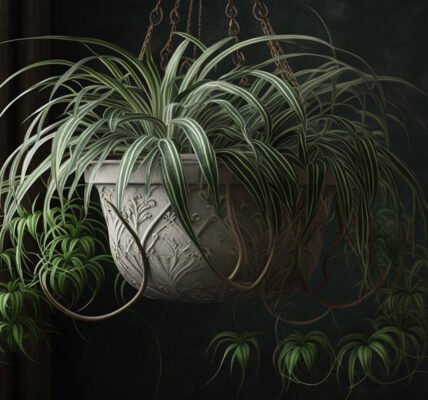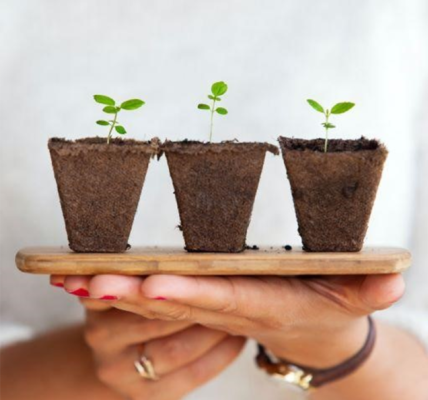The Pothos plant is a great way to get started caring and growing your houseplants.
This lovely plant is an easy way to make your spaces green and fresh as it is an easy to
grow plant. Pothos is a perfect indoor plant because it is an air purifying plant. It
removes toxins like formaldehyde from the air. Pothos’ aerial roots system make it
native to Southeast Asia and make it to overgrow forest floor and tree trunks.
Some of the most common varieties of pothos are golden pothos, jade pothos,
neon pothos, and cebu blue pothos. Recently, the most popular variety of pothos is
cebu blue pothos. It is becoming famous due to its beautiful blue-green leaves.
It can be grown vertically in the home by using peat moss stands in good indoor
conditions. It can trail up to 12 feet long on the wall and leaves are 4 to 8 inches long.
Pothos is known as an attractive and easy-to-care plant throughout the world. It has a
vining nature that’s why it is the best choice for hanging baskets. Pothos is also known
as Devil’s Ivy because of its vigorous growth and for bouncing back to life even in the
worst conditions.
Pothos Plant Care
Pothos thrive best in bright, indirect light but can also do best in medium to low
indirect light in north-facing houses during cooler seasons. This plant can not survive
in intense, direct sunlight. Direct sunlight will burn its leaves and make them brown.
Pothos grow vigorously in the wild.Its leaf will achieve surprisingly huge
size i.e. more than a foot. However, at home it tends to have smaller leaves. Typically
mature house pothos typically range from 4-8 inches.While its vine reaches more than
a couple dozen fett in ideal conditions.
Pothos plant watering schedule is so easy going.It needs water only once in a
week. Allow the plant soil to dry out completely between watering schedule.It needs
more water in bright light and less in lower light conditions. If the leaves of pothos are
turning yellow or stem becoming black then this is the sign of overwatering. While the
sign of under watering is wilted leaves.
Most Pothos prefer temperatures between 18°C-30°C(65°F-85°F). Hence, it is
an easy going plant for beginners. You only need to optimise the lighting and watering
conditions. Additionally, to incorporate the well-draining soil you can add ingredients
like lava rocks or perlite to improve aeration.
Spider mites and mealybugs can become a problem for pothos. Treat house
plants pests as soon as they appear with natural pesticide liquid like neem oil. Root rot
can occur due to overwatering or poor drainage of potting soil. Due to root rot, leaves
will turn yellow and growth will be stunted.
Cebu Blue Pothos
Cebu blue pothos is a unique variety of pothos who have stunning foliage. The
scientific name of cebu blue pothos is Epipremnum pinnatum.Cebu blue pothos is a
tropical vine plant that is native to Southeast Asia. Iis is becoming popular due to its
attractive appearance ,ease of care, and ability to thrive in low-light conditions.
This plant has a long and trailing stem. The leaves of cebu blue pothos are
heart-shaped that are typically green, but new leaves appear in blue-green color.
Cebu blue pothos typically requires bright,indirect light but can also tolerate
lower light conditions.It likes moist and well-draining soil. Too wet can cause root rot
and cebu blue pothos can die.
It can also be named as Devil’s Ivy, Blue Pothos, Dragon-tail plant, and Centipede
Tongavine.
How to Propagate Cebu Blue Pothos
Cebu Blue Pothos plants are very easy to propagate, making you able to share this
plant with friends, family and neighbours. It can easily propagate in the soil as well as
in the water.
Following are the steps to propagate cebu blue pothos:
● Take a cutting from a healthy-looking plant. Leaves should not be wilted.
● Make a cutting from the stem.The ideal cutting will be 4-6 inches in length
and should have 2-3 leaves on it.
● Take the stem cutting with a root node on it because it is the point where
aerial roots grow out.
● Now place your cutting in either a clear glass of water or a small pot
potting soil.
● After a few weeks, you will notice roots growing in the clear water.
● The plant in the soil will be able to support itself. This is the sign of
successful propagation in soil.
Other varieties of Pothos
Pothos has a wide range of varieties. These include Golden Pothos, Marble Queen
Pothos, Manjula Pothos, Neon Pothos, Cebu Blue Pothos, and Jade Green Pothos.
Golden Pothos
Golden Pothos also known as hunters rove. It is one of the most popular houseplants
in North America. It is commonly found in the wild. It has yellow-golden flecks on
their leaves. In low light conditions it will start losing its creamy golden colour and
start appearing in a more greener colour. To keep its yellow-golden flecks, place it in
bright indirect light.
Marble Queen Pothos
Marble Queen Pothos are highly variegated pothos. It is easy-to-grow and highly
versatile plant.It has vining foliage with white and cream variegation. It can grow in
all spaces of the house. It should be repotted once every couple of years to avoid
rootbound. It doesn’t require regular pruning.
Manjula Pothos
Manjula pothos have large, heart-shaped leaves with beautiful white, green, and cream
variegation. Manjula pothos as compared to other types is hard to find due to its rare
status. In low light conditions, its variegated leaves may lose some of its creamy
colour. You can set a grow light if there is not enough natural light in your space.
Neon Pothos
Due to its bright-green leaves it is named as a neon plant. It is a low maintenance
plant. It is a great choice for busy people as well as beginners. This plant prefers
indirect light to keep its neon leaves bright and healthy. It is native to tropical
Solomon Island. It has heart shaped leaves and vining growth habits.
Jade Green Pothos
It is a naturally occurring mutation of golden pothos, it has thick, dark, shiny green
leaves, sturdy stems, and its extra drought resistant. It is a low maintenance plant and
grows extremely well in all light conditions.




